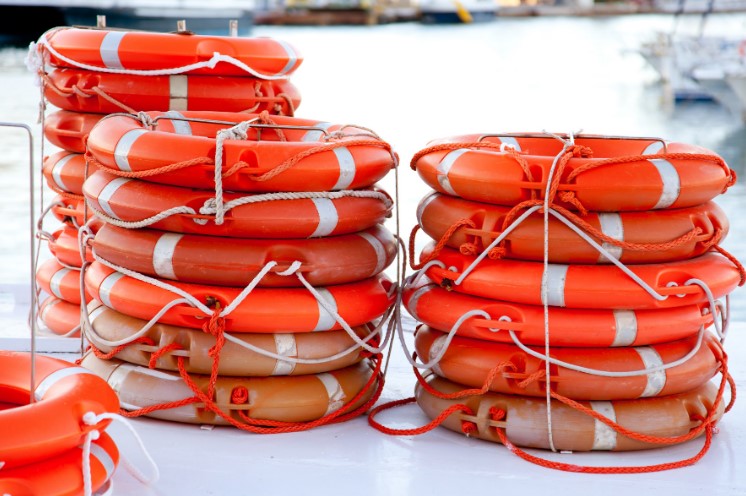In our mutual love for the sea, let’s explore effective strategies that which practice reduces the risk of a dangerous boating emergency?. The thrill of being at sea, the refreshing breeze, and the rhythmic lapping of waves are captivating. However, it’s essential to realize that this serene and beautiful environment can also pose risks. As boating enthusiasts, it’s our responsibility to engage in safe boating practices, promote safety awareness, and take proactive steps to prevent emergencies.
1. Boating Safety Measures

Safety, while boating, begins with the right measures. Boating safety measures such as wearing life jackets, never boating under the influence, and regularly maintaining your vessel are foundational pillars of safety at sea. Life jackets are crucial even if you are a proficient swimmer; they can be the difference between life and death in a sudden emergency.
Additionally, boating under the influence is illegal and highly risky as it impairs judgment and motor skills. Maintaining your boat regularly is also a critical safety measure; it ensures that all your vessel’s systems work optimally, reducing the risk of sudden mechanical failures at sea.
2. Emergency Preparedness

Emergencies are often unpredictable, but being prepared can dramatically decrease their potential harm. A well-prepared boating emergency kit should include items such as flares, a first-aid kit, fire extinguishers, flashlights, extra batteries, and emergency food and water. Regular drills and emergency simulations can also help the crew respond efficiently to actual emergencies.
3. Navigation and Boating Safety

Boating safely is also heavily reliant on efficient navigation. Understanding how to read nautical charts, use a compass, and employ modern GPS systems is vital for a safe voyage. A good understanding of navigational rules can prevent collisions, one of the most common causes of boating emergencies.
4. Weather Awareness

Weather at sea can change rapidly, making weather awareness a crucial aspect of safe boating practices. Always check the local weather forecast before heading out to sea and keep an eye out for signs of changing weather conditions while you’re out. Knowledge of basic meteorology can be lifesaving in certain scenarios.
5. Boating Education and Training

Nothing can replace the value of proper boating education and training. Certified courses not only provide theoretical knowledge about safety regulations and guidelines but also provide practical training to deal with emergencies.
6. Vessel Maintenance and Safety: Prevention is Better Than Cure
Routine checks and proper maintenance of the vessel’s systems can significantly reduce the likelihood of an emergency. Regular inspection of the hull, engine, electrical systems, and safety equipment is essential to ensure a safe boating experience.
7. Understanding Boating Regulations and Guidelines: The Rulebook for Safety
Familiarizing yourself with local, regional, and international boating regulations is critical for safe boating. These regulations are designed to prevent accidents and enhance safety. They encompass rules about boat registration, age requirements, speed limits, operating rules, and safety equipment requirements, among other things. Observing these rules and guidelines not only ensures your safety but also makes the water safer for everyone.
8. Safety Equipment for Boating: The Lifelines at Sea
Having the appropriate safety equipment aboard is a legal requirement and a practical necessity. In addition to the aforementioned life jackets and first aid kit, other vital safety equipment includes anchor and line, bailer, distress flares, sound-signaling device, navigation lights, and a VHF radio. Each of these tools can be vital in an emergency situation.
9. Boating with Children: Extra Caution for Extra Care
Boating with children can be an exciting adventure for them, but it also necessitates additional safety considerations. Ensure that children have appropriately-sized life jackets and understand the basics of boating safety. Teaching them about safe behaviors on a boat, like keeping their hands and feet inside the boat at all times and not running on a boat, can help prevent accidents.
10. Proper Boating Techniques: Mastering the Craft
Mastering proper boating techniques is a significant step in reducing the risk of emergencies. Understanding steering controls, docking procedures, and anchoring techniques, as well as mastering maneuvers such as turning, stopping, and reversing, can help prevent mishaps.
11. Rescue Procedures in Boating Emergencies: The Savior’s Guide
Understanding rescue procedures is a necessity for every boater. In the event of an overboard emergency, knowing how to execute a man-overboard rescue maneuver could be the difference between life and death. Similarly, understanding how to tow another boat or being towed can be crucial in an emergency.
FAQs
1. How can I improve my boating skills to minimize risks?
Improving boating skills involves a combination of education and practical experience. Consider enrolling in certified boating safety courses and spend time on the water to enhance your skills.
2. What should I do in case of a medical emergency while boating?
Always have a well-stocked first-aid kit on board, and consider undergoing basic first-aid and CPR training. In case of a medical emergency, administer first aid if possible and contact the local Coast Guard for assistance.
3. What should I do if my boat starts taking on water?
If your boat starts taking on water, first ensure everyone is wearing a life jacket. Then, try to identify and plug the source of the leak. Use a manual or electric bilge pump to remove water and signal for help using flares or your VHF radio.
4. How does weather affect boating safety?
Weather plays a significant role in boating safety. High winds can stir up large waves, and storms can reduce visibility and create dangerous conditions. Always check the weather forecast before heading out, and return to shore if the weather worsens.
5. Are there any specific safety measures for boating with children?
Yes, children should always wear a life jacket while on a boat. Teach them to keep their hands and feet inside the boat at all times and not to run on the boat. It’s also a good idea to have them participate in a boating safety course designed for children.
6. Can you recommend any boating safety courses or training programs?
There are many organizations offering boating safety courses, including the U.S. Coast Guard Auxiliary and the American Sailing Association. Check with local boating clubs or marinas for recommendations in your area.
Also Read: Olamovies: Download Highest Quality Movies (2023)
Final Words
Navigating the open seas can be an exciting adventure. However, this adventure requires us to act responsibly to ensure our safety and the safety of others. Incorporating these practices can significantly reduce the risk of dangerous boating emergencies and help ensure that our boating experience remains enjoyable and safe. Remember, “A smooth sea never made a skilled sailor.” So let’s embrace the sea with its challenges and safeguard our adventures by being prepared. Let’s make our boating experience not just about the thrill of the ride, but also about the satisfaction derived from acting responsibly towards our safety and that of others. Which practice reduces the risk of a dangerous boating emergency? It’s the proactive approach we take towards preparedness and responsible behavior on the water.
Stay safe, and happy boating!


